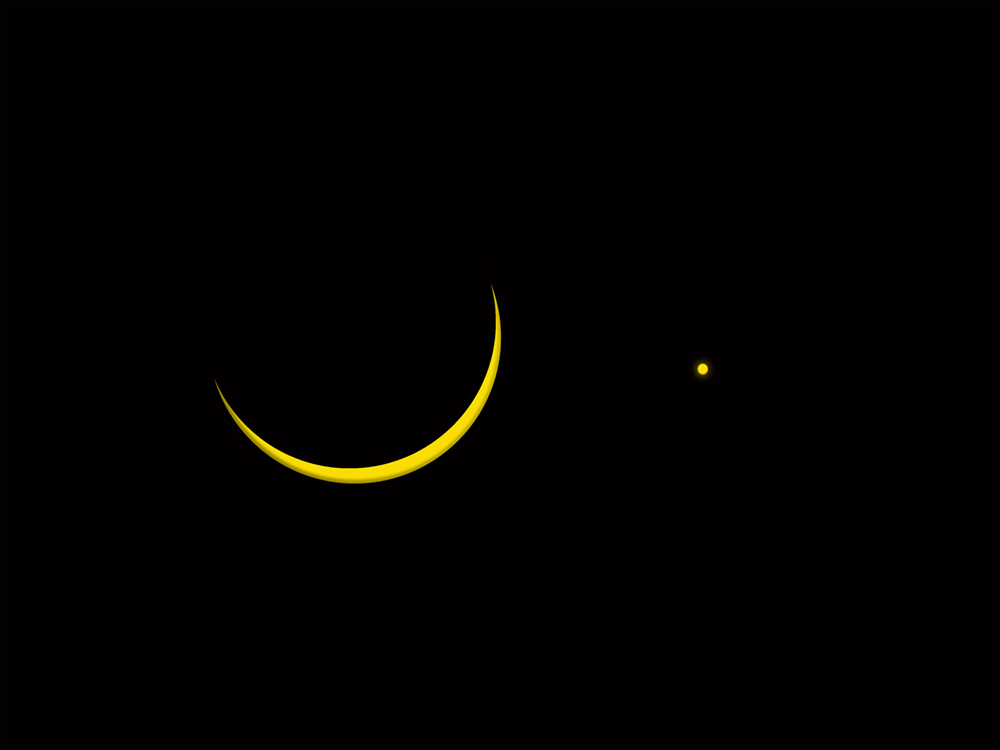A few nights ago, I looked up in the sky. The moon was just a little sliver, sort of on its side, like a bowl. And right next to it was the brightest star. I stood and stared, them glimmering, me goggling. I told myself to figure out what that brightest twinkle was, next to the moon.
I Googled around a bit this morning. I’m still unsure of what it might have been. For the Astronomers in my life, it was mostly in the eastern sky, but a little south, right next to the sliver of the moon, around 9 p.m. The Google results say Sirius is bright, and Cassiopeia, and Andromeda. But those are all in the wrong places, as far as I can tell.
The truth about me is that I fail miserably when it comes to the stars. I wish I were one of those people that just look up and say, “Oh, that’s Orion, the Hunter.”
But here’s the thing about stars. First of all, our little galaxy, that good old Milky Way, has approximately 100 billion stars in it. That’s 100 billion stars. Now, I can barely remember the capitals of the 50 states. Looking upward, that is a lot of sparkly billions to identify. But. And that’s a big but, the Milky Way is not the only galaxy in the universe.
There are about 200 billion galaxies in the observable universe. A little perspective here. If you had ONE billion minutes, it would equal 1,902 years.
The number of stars in a galaxy varies, but assuming an average of 100 billion stars per galaxy means that there are about 2,000,000,000,000,000,000,000 (that’s 2 billion trillion) stars in the observable universe.
So. When I look up in the night sky, this is what I see. Those last three paragraphs flash before me. Even if there are only five stars visible on a cloudy night, my mind thinks about the billions of stars that those potentially might be. How can anyone tell for certain? On a much smaller scale, that’s like looking in a one-pound box of white rice and picking out the third guy in the fifth row from the left.
In fact, I’d be willing to bet that most of the time, those astronomy people are faking it. There. I’ve said it. That’s what I think. I’m betting they might know the general vicinity of something. But the actual star?
A scenario. I’ll point up and say, “Ooooo. Look at that brighty pants.” And they in turn, will say (assuredly), “Yes, that there?” (Pointing in my general pointing vicinity.). “That’s Castor, there. It’s part of Gemini.”
Yeah, right. Those constellations don’t look a thing like what they are supposed to be, by the way. I am a Taurus. People have tried to show me Taurus, the Bull. It looks more like a slingshot than a bull. Why not just call it “Slingshot”?
And while we are on it. The Big and Little Dipper. My jury is still out on those two. They look nothing like potato chips.
I admit I’m hopeless. People have suggested those Star Gazing apps, and I’ve tried several. It seems to confuse the issue further, and by the time my stargazing session is over, I’m sitting on the ground somewhere, drooling, playing Sudoku on my phone.
What I like about the stars is their twinkle. I like the possibility. When I look up into the night sky, I know that everyone, everywhere, can see the same sky. All of us. We can know, right then and there, how small we are in the midst of this world where our feet are fixed to the ground by gravity. All of us. I look up and I see the endless infinity of energy, floating, right above our heads, staring back down at us. And we wonder how all those stars shine. Those stars are wondering too. Wondering how we will shine.
And there is no need to put a name on that.
=======
Sometimes we need a wise guide to peel back the ceiling of our lives to remind us that infinity never places any limits on our skies.
— Curtis Tyrone Jones
====
Life is not about finding our limitations, it’s about finding our infinity.
— Herbie Hancock
====
Certainty is absence of infinity, infinity is presence of uncertainty.
— Nanamoli Bhikkhu
====
